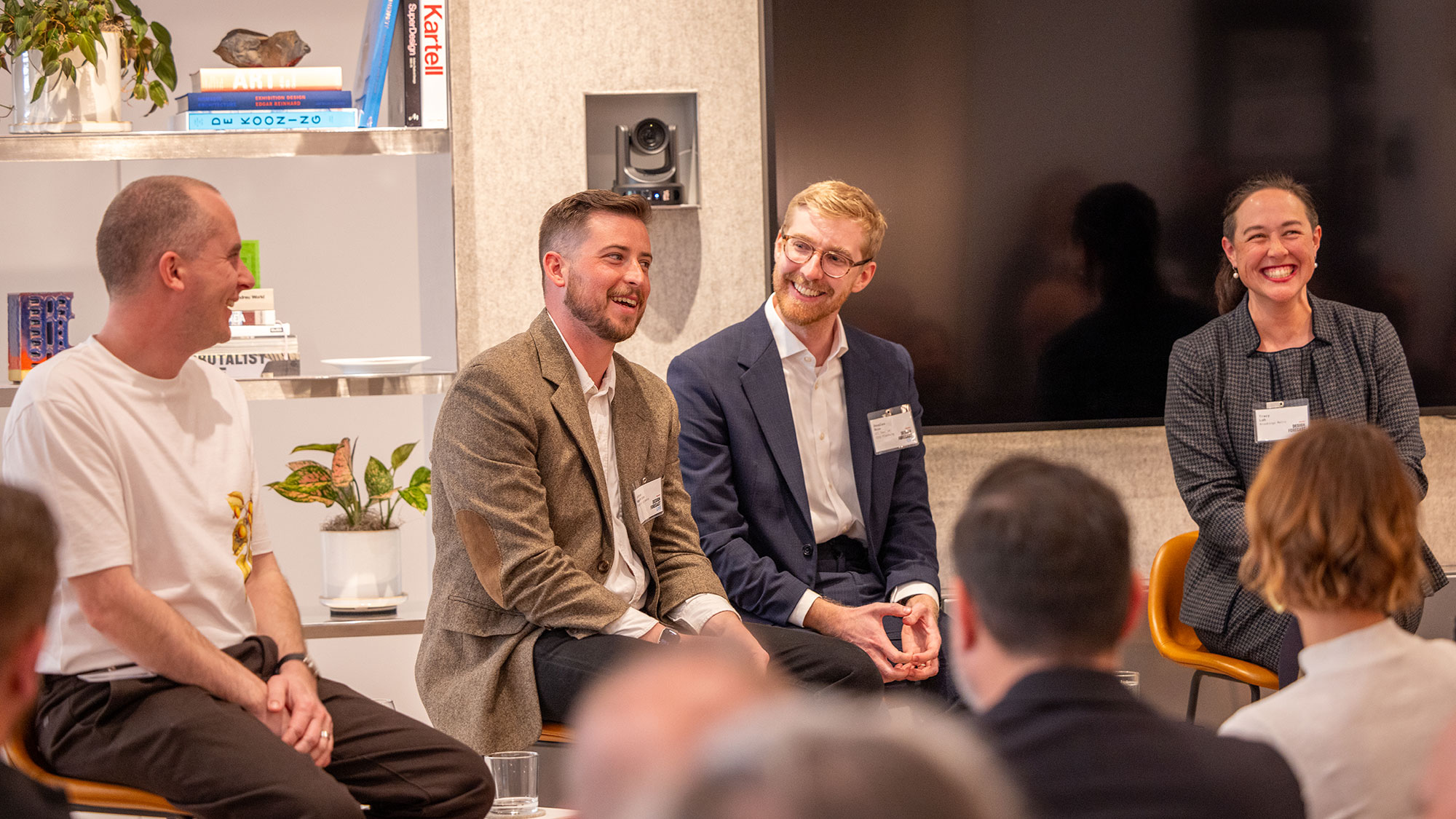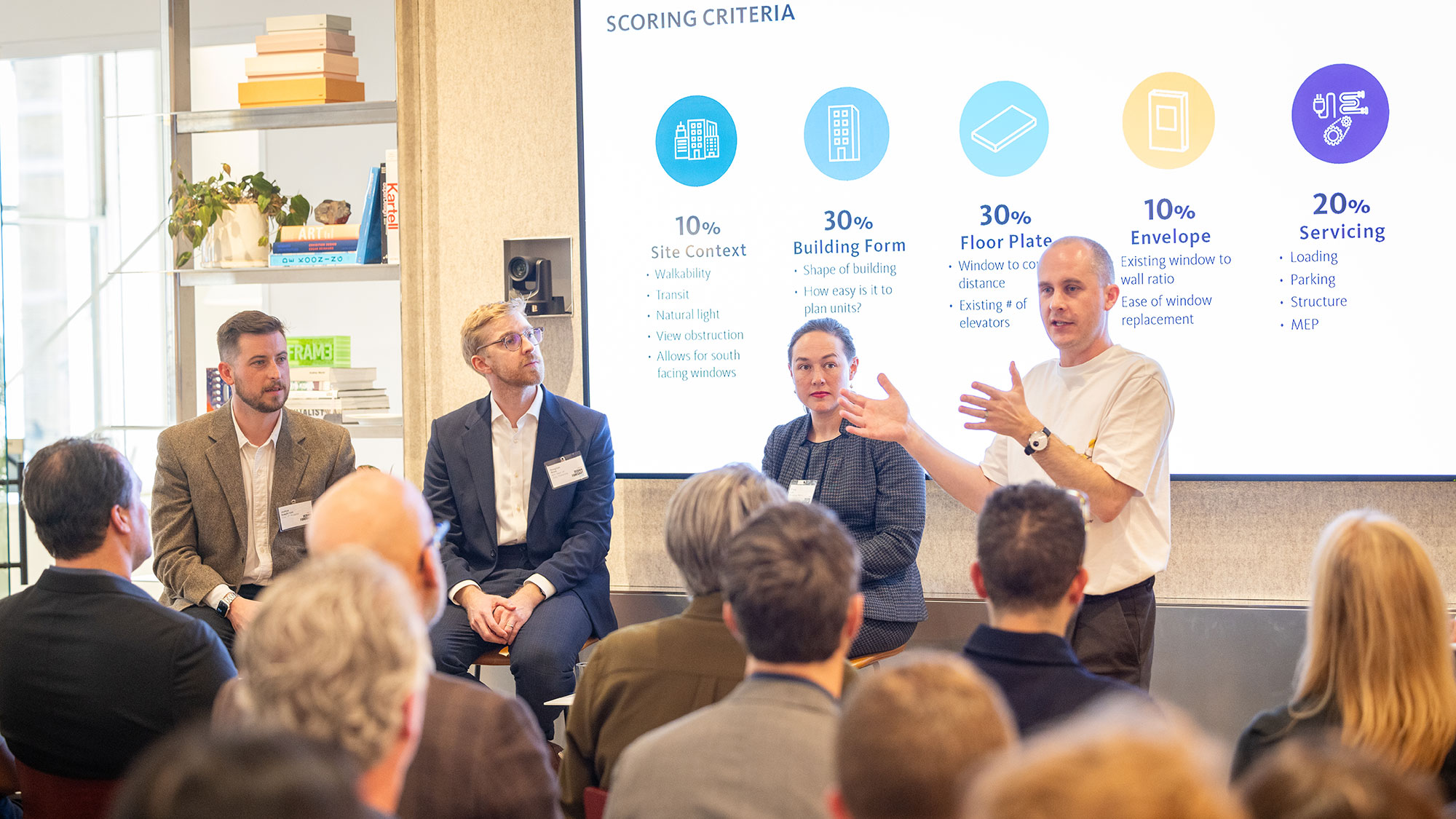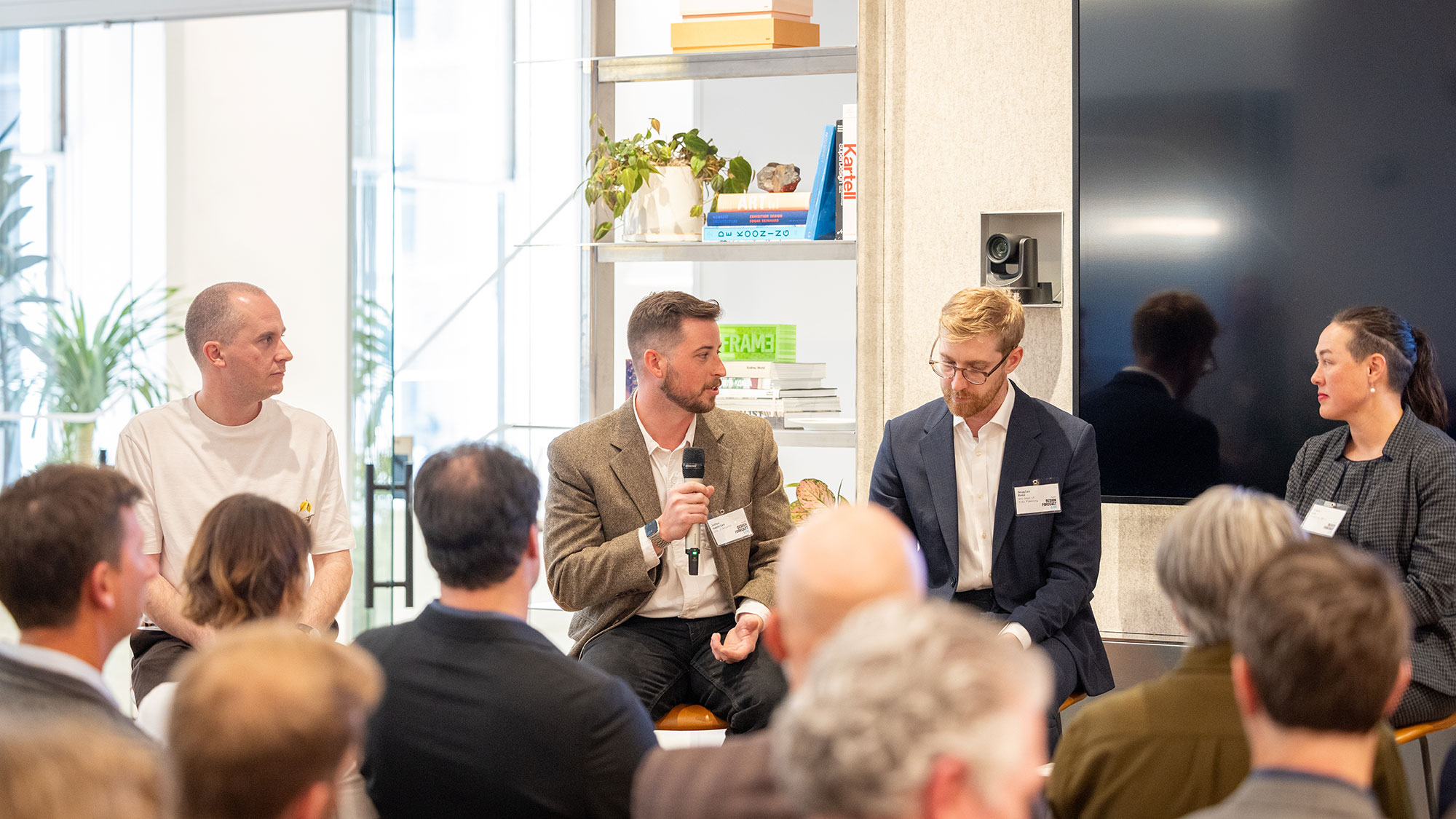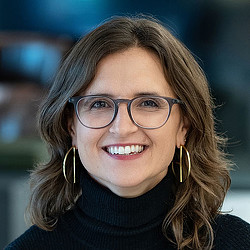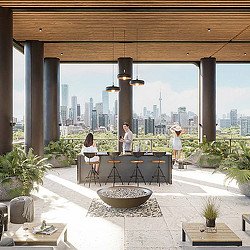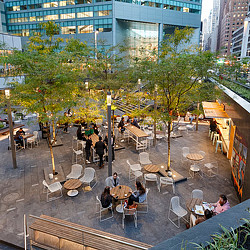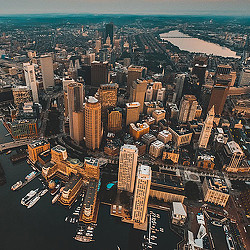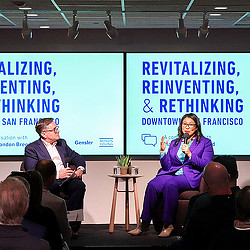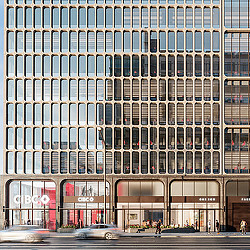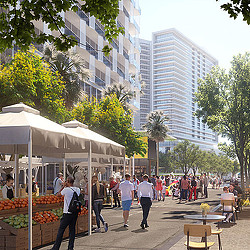What Can San Francisco Learn From Successful Building Conversion Programs in Other Cities?
By taking cues from other cities, San Francisco has an opportunity to make it easier to repurpose underutilized buildings, address the city’s housing crisis, and revitalize downtown.

Cities everywhere are facing significant challenges rebounding from the pandemic, and San Francisco is an extreme example of such difficulties. We’ve seen office vacancy rates skyrocket, reaching a record high of 36.7% in the first quarter of this year, per CBRE.
While there is certainly cause for concern, as designers shaping the built environment, we also view this moment as a tremendous opportunity. Gensler has explored the viability of building conversions, particularly transforming empty office buildings into housing to bring new life to our downtowns. On a local scale, we’ve partnered with policy organizations to understand the feasibility of such conversions and are beginning to pave the way for office-to-residential projects in the city.
But there is still so much to learn as we expand our work in this area — what are developers and public officials in cities like New York, Atlanta, and Calgary doing to bring these transformational projects to life? And how can local municipalities incentivize adaptive reuse strategies that will revitalize downtown San Francisco?
We recently convened a panel of leaders from these cities at a Design Forecast Live event held in Gensler’s new San Francisco office to discuss their successes and better understand how we can apply these insights to reactivate our central business district.
Read on for the key takeaways:
- New York City is pushing for zoning reform to make its central business districts vibrant destinations.
- In Atlanta, community engagement is crucial to addressing inequities and creating a healthy downtown.
- By analyzing the highest and best use for vacant buildings, 10% of all office structures in downtown Calgary are now in some phase of conversion.
New York City: Zoning Reforms for Mixed-Use Destinations
Like San Francisco, New York is no stranger to reinvention. “Out of crises came a resiliency that has been spurred in part by the reimagination of its central business district,” said panelist Doug Rose, Assistant Director of Economic Development and Regional Planning at the New York City Department of Planning. “A diverse industry mix, coupled with solid mixed-use planning, has helped New York bounce back from times of extreme distress.”
For example, the adoption of the Lower Manhattan Revitalization program in 1995, which included financial incentives and regulatory reforms to encourage office development and office-to-residential conversions, helped transform the Financial District into a more mixed-use neighborhood, drawing a stronger pedestrian presence back to the area and offering a variety of experiences. After 9/11, developers converted 20 million square feet of office space into housing, doubling the residential population of Lower Manhattan.
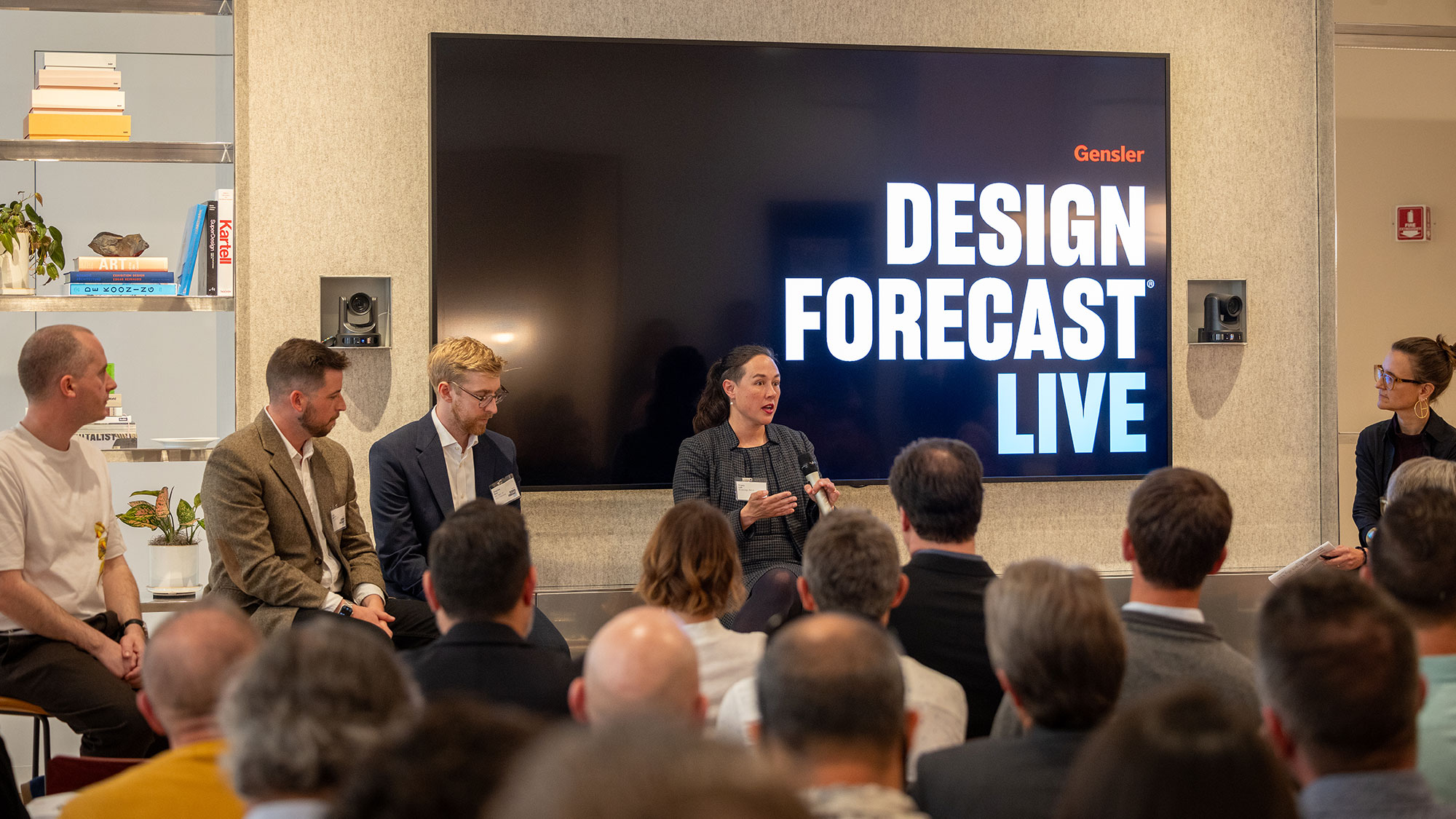
While the city has documented success with adaptive reuse, there are also scores of efforts underway to remove government hurdles and regulatory barriers to make conversions easier. The New York City Department of Planning published an office adaptive reuse study in partnership with experts in architecture, development, economics, finance, law, public policy, and tenant advocacy to update flexible conversion regulations and serve current needs. Mayor Adams has also introduced a “City of Yes” zoning reform proposal, aimed at removing obstacles for small businesses to expand and allowing more retail and commercial services without government approval or radically reforming housing citywide.
But such reform requires a holistic rationale. According to panelist Tracy Hadden Loh, Fellow at The Brookings Institution Metropolitan Policy Program, “It’s difficult to mobilize a favorable policy climate.” While the revitalization of New York’s Financial District has largely been a success, there must be a stronger case to get some of the interventions necessary to revitalize Midtown — one with mutual costs-benefits sharing and more affordable options in the mix, she says.
To truly reimagine our struggling downtowns, we can adopt an “office-to-everything” mindset. With a focus on zoning reform, we can convert stranded assets to suit a range of needs, from affordable housing to small business growth to education.
Beyond zoning reform, Governor Hochul recently signed into law a tax incentive for affordable housing conversions in New York City, which Rose believes will be effective addressing the city’s housing crisis. Property tax exemptions during the construction period will be 100% for up to three years, while post-construction exemptions depend on location and permit issuance date. The sooner conversions start, the longer the tax breaks will last, which could be a key motivating factor for developers and landlords.
Broader revitalization efforts with tax breaks, while not related to conversions, are reinforcing the message that offices are still critical to economic vibrancy. The M-CORE pilot program is an incentive that supports the renovation of office buildings and is proving to be very popular, Rose says, as multiple buildings have been approved with more in the queue.
Atlanta: Affordability and Accessibility Are Key
In Atlanta, panelist Joshua Humphries, Senior Policy Advisor to the Mayor for Housing, said affordable, mixed-income, attainable housing is one of the most important considerations when analyzing and planning building conversions. The mayor’s office has paid special attention to the city’s downtown for these projects, where there is a shortage of housing and an oversupply of aging offices.
For instance, as part of Mayor Andre Dickens’ administration’s affordable housing initiative, the city acquired 2 Peachtree Street from the state of Georgia, a 41-story office tower that Dickens says will “serve as an anchor for the ongoing revitalization of downtown Atlanta.” With plans to transform the structure into a mixed-use, mixed-income development with affordable housing, the administration is confident that it will bring economic activity back to downtown.
A healthy, activated downtown can have a positive ripple effect on surrounding neighborhoods. “We’ve also been looking into how to convert old buildings in the city into schools and parks,” Humphries said. “Places for gathering and learning are really important to factor in if the goal is to bring people back to the area.”
To adequately address inequities, Humphries shared that his office prioritizes community engagement. Understanding the realities underserved populations face helps get to the heart of community members’ needs. Accessibility to public transit is also heavily factored into building transformations in Atlanta, as a truly thriving downtown must be open and available to all.
Calgary: Look at the Highest and Best Use
The city of Calgary is a North American leader in incentivizing conversions. The city has made $100 million available to assist property owners in office-to-residential conversions through a grant funding mechanism that made $75 per square foot available to eligible projects. This scheme is set to increase the downtown population by 23%, helping the city achieve its vision by incentivizing real estate development, supporting vibrant initiatives, developing downtown diversity, and improving safety, security, and quality of life.
Gensler Global Building Transformation & Adaptive Reuse Leader Steven Paynter spoke to the ways in which building transformations can help cities realize their goals and shared examples of successes in Calgary.
At the onset of the pandemic, Paynter and his team worked to understand the concerns of developer and landlord clients, who sought guidance regarding the best use for their aging and less desirable buildings. These questions resulted in the development of Gensler’s office-to-residential algorithm. Paynter and his team collaborated with Calgary Economic Development to score 6 million square feet of buildings in the downtown core utilizing the algorithm. With the city’s continued support, Calgary now has 17 buildings at some phase of the conversion process, translating to 10% of all its downtown office buildings.
Outside of Calgary, Gensler’s office-to-residential algorithm continues to unlock new opportunities in markets across North America. We’ve now evaluated more than 1,300 potential building conversions in 130 cities, and each project realized has made a strong case for more. It has also provided clarity for those wondering which kinds of buildings can really be converted, and how.
Conversions Could Be Key to San Francisco’s Revival
San Francisco is at an inflection point in its post-pandemic recovery. By taking cues from the learnings and successes of conversion programs in other cities, we have an opportunity to make it easier to repurpose our underutilized buildings, address the city’s housing crisis, revitalize our downtown, and make San Francisco more resilient in the face of future crises. Developers, property owners, and local governments must come together to pave the path to a stronger, reinvigorated downtown.
For media inquiries, email .
